How Dorothy Parker Getting Fired From ‘Vanity Fair’ Launched the Algonquin Round Table
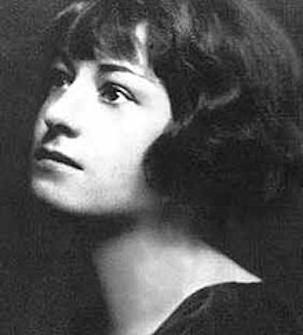
This article [When Dorothy Parker Got Fired from Vanity Fair] was originally published in the Public Domain Review under a Creative Commons Attribution-ShareAlike 3.0. If you wish to reuse it please see: https://publicdomainreview.org/legal
Dorothy Parker lost her job as Vanity Fair theater critic on January 11, 1920, in the tea room of the Plaza Hotel. Parker must have known there was trouble brewing as she sat down across from editor Frank Crowninshield. She had been in hot water for months. Her latest column had been a particularly biting one. Reviewing The Son-Daughter, Parker contended that David Belasco's new play followed his old one, East Is West, "almost exactly," which Belasco made known he considered grounds for a libel suit.
A couple paragraphs later, writing about the new Somerset Maugham play Caesar’s Wife, Parker zinged actress Billie Burke for performing "as if she were giving an impersonation of Eva Tanguay.” The comparison to a risqué vaudevillian enraged Florenz Ziegfeld, one of Vanity Fair’s most reliable advertisers, who happened to be Burke’s producer — and husband. Ziegfeld and Belasco both took their umbrage to publisher Condé Nast. It is in dispute which complaint held more weight, but either way, Nast passed the buck to Crowninshield, who met Parker at the Plaza and fired her from the job she had held for two years. Parker promptly ordered the most expensive dessert on the menu and left.
In the days that followed, Parker’s cronies who hung out in the Rose Room of the Algonquin Hotel made the firing and its fallout at Vanity Fair into a media scandal. Parker herself would never again hold a desk job or draw a regular salary, finding success instead as a freelance critic, author of brilliant and acclaimed verse, short fiction, essays, plays, and film scripts. The incident changed her career and stature, and its response helped forge the legend of what would eventually be called the Algonquin Round Table.
Parker may have learned from her parents the tendency to not quite accept the rules. She was born Dorothy Rothschild (a surname whose mention always caused her to protest any relation to the Rothschild lineage) in 1893, a child of once-forbidden love between Eliza Annie Marston, daughter of British burghers, and Jacob Henry Rothschild, child of Jewish immigrants, who married over the opposition of Marston's parents.
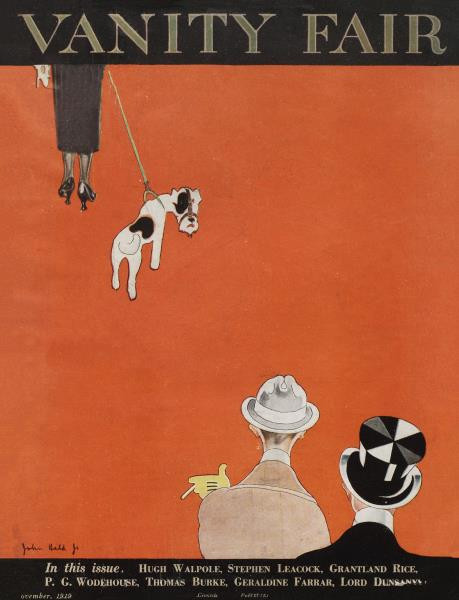
Dorothy grew up in New York City, in her family’s 214 West 72nd Street townhouse. It was a newly fashionable neighborhood; Broadway, a few steps away, was then called "the Boulevard" along this stretch, in homage to the Parisian boulevards designed by Georges-Eugène Haussmann that it very slightly resembled. Dorothy’s was not an idyllic childhood. Her mother died when she was five. When she was 18, the Titanic sank, taking with it a favored uncle, Martin Rothschild; Parker may have accompanied her distraught father to the docks to greet the shipwreck’s survivors and learn that her uncle was not among them. Henry Rothschild, devastated, fell ill and died less than a year later.
Needing income beyond her father’s legacy, Parker found a job playing piano at one of many dance schools, which were faddish in the mid-1910s. But she wanted to earn money by writing. She went about it the old, hard way, sending in cold submissions of poetry until her number was called. In 1914 Vanity Fair accepted her poem "Any Porch," which satirized chitchat of society women in meticulously metered and rhymed stanzas.
The piece earned her $12, comparable to about $300 today. Parker used the poem as justification to force her way into Vanity Fair’s offices at 19–25 West 44th Street and ask for a steady job. The editor, Crowninshield, was sufficiently impressed. In 1915 he hired her for Vogue, another magazine owned by Nast, to do editorial work and write captions for illustrations of women’s garments. Soon her personal life also took a dramatic turn, and then another, when she met Edwin Parker II in 1916, married him in 1917, and a week later watched in surprise and dismay while "Eddie" enlisted in the US Army and went off to World War I.
During her two years at Vogue, Parker worked under Edna Woolman Chase, a legend. Chase, following a course normally reserved for men, had worked her way up from the mailroom to the top of the editorial ladder, becoming the managing editor in 1911 and editor-in-chief in 1914; she would stay in that position until 1952. Chase’s dedication was matched by her strictness. She insisted on formal workplace demeanor, and she and her young employee, demure in appearance but iconoclastic in attitude, grated on one another.
Though thrilled when she landed the job, Parker could only follow the leader for so long, and was soon plaguing Chase with unprintable captions, meant to challenge the Vogue sensibility. One nightgown, she suggested, could be worn as a sexual enticement: "When she was good she was very very good, and when she was bad she wore this divine nightdress…" Such insinuation was a no-no for Vogue readers of 1916. The caption made it through several editorial stages before its twist on the "girl with the curl" nursery rhyme was recognized.
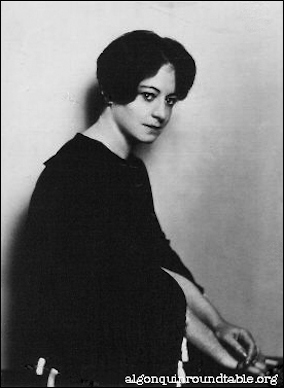
Crowninshield relieved Chase of her problem employee in 1918, bringing Parker over to the editorial staff at Vanity Fair and offering her the theater critic job that would change her career. It was a wonderful time to have a front-row seat to New York’s theater scene. Over 80 venues were active in the Broadway district, opening over 150 shows a year; a reviewer could write about new shows every week. Parker’s monthly columns demonstrated early her propensity for dropping, and sometimes deflating, the big names — regardless of whether they belonged to someone on stage. In April 1918, while touting Wodehouse’s musical Oh, Lady! Lady!!, she digressed to say that "not even the presence in the first-night audience of Mr. William Randolph Hearst…could spoil my evening".
Parker loved being a theater critic, but she loved less and less Nast and Crowninshield’s attitudes toward the staff. In this, as in many things, she was supported (and egged on) by her two new colleagues at Vanity Fair, Robert Benchley and Robert Sherwood. Benchley was hired as managing editor in the winter of 1919 and became Parker’s officemate in May. His straitlaced demeanor and traditional domestic life — wife, children, and house in the suburbs — belied an anarchic sense of humor that made him one of the U.S.’s leading humorists for decades. Soon after Benchley’s arrival, Sherwood, recently returned from the war, came aboard as writer. Both Sherwood and Benchley had trained, so to speak, at Harvard, writing satire for the Harvard Lampoon; both, like Parker, would flourish as authors after Vanity Fair. It is clear that Crowninshield had a brilliant eye for literary talent.
In 1919, however, the three writers soured on the management and particularly on the ownership of the magazine they worked for. They disdained Nast’s combination of crass libertinism and schoolmarmish insistence on office conformity, and they resented their uncompetitive salaries. They were "treated like serfs," said Sherwood, and "paid that way, too". They acted out by decorating Nast’s office with streamers for a mock bon voyage party, and at one point, when Crowninshield was on a trip and left them minding the store, publishing a satirical fashion article by Sherwood in which he predicted that men’s attire would soon include waistcoats trimmed with jewels.
Caesar’s Wife had its opening night in November 1919 and ran until the following February at the Liberty Theater (whose facade is still there, now part of Ripley’s Museum, believe it or not). The play depicts the marriage between an English diplomat and a woman many years his junior. Parker’s review is not completely unkind until its conclusion: "Miss Burke, in her role of the young wife, looks charmingly youthful. She is at her best in her more serious moments; in her desire to convey the youthfulness of the character she plays her lighter scenes as if giving an impersonation of Eva Tanguay".This was in fact a toned-down revision; in her first draft, Parker had written that Burke "threw herself around the stage as if giving an impersonation of exotic dancer Eva Tanguay". After Crowninshield objected, Parker offered the slightly less inflammatory phrase.
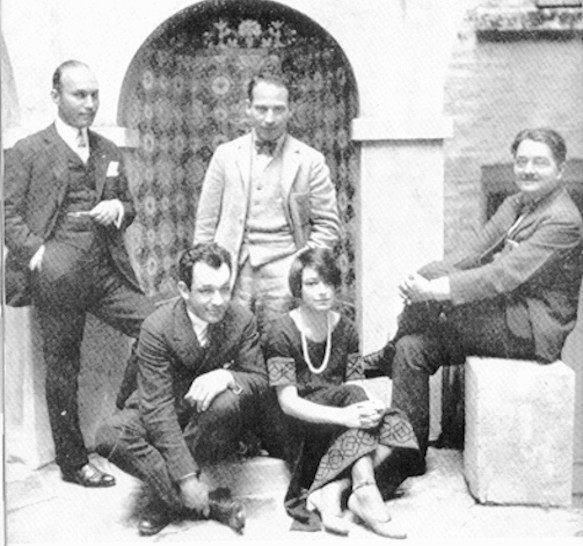
The published version was insulting enough. Caesar’s Wife, by the acclaimed Maugham, was meant to burnish the credentials of Burke, returning to the stage after three years in cinema, and her husband Ziegfeld, best known for his annual variety shows. Parker’s reference to Tanguay undermined these aspirations. Eva Tanguay’s name was a byword for indecorum, eroticism, and unbridled physicality. She was, by all accounts, not particularly skilled as a singer, dancer, or actress, yet she became an international star, famous partly for her salary, which eventually climbed to an astonishing $2,500 per week when she headlined at the Metropolitan Theater in Brooklyn in 1921. As Printer’s Ink had hailed her years earlier: "She can neither sing, nor dance, nor recite…. Just the same, Eva commands the money. The audience wants her.” Tanguay was also known for transgressions against traditional female comportment on stage and off, and for acting as her own business manager, hiring male business agents but insisting on controlling her own career.
Parker's allusion to Tanguay conjured up associations that show her remark to be more than a dig at an imperfect performance. It also subtly invoked the dynamics of the Burke-Ziegfeld marriage and served as a swipe at patriarchal control. When Parker refers to the "young wife", and twice reiterates the "youthful" qualities of the role, she loops in the public history of Ziegfeld’s relationships with younger women, and of those women getting replaced by even younger women. Burke, for example, 17 years Ziegfeld’s junior, had married him in 1914 following his divorce from Lillian Held and endured his unrepentant philandering ever since. Parker’s review implies that Burke is overacting because she is too old for the part of the "young wife" — and that her status as Ziegfeld’s "young wife" was expiring as well. Parker had thought Burke both inept and (her opinion unsympathetic to the plight of women actors in an inegalitarian theater industry) miscast, and had turned the critique personal. Less overtly, the reference to Tanguay, a woman who resisted having her career guided by men, sets in relief the professional arrangement between Burke and Ziegfeld.
Nine years earlier, Ziegfeld had employed Tanguay in his Follies of 1911 and knew well what Tanguay represented: excess, vulgarity, spectacle — all the associations he was trying to avoid. He had already complained about Parker’s writing to his friend Nast, but this time he was either more persuasive or had the weight of Belasco's threats to add to his own. Nast was not in a position to lose a prominent source of ad revenue and weather Belasco’s libel suit, so he called Crowninshield, his trusted chief editor at Vanity Fair since 1912.
Crowninshield rose to the occasion. The Plaza Hotel was, in 1920, already a symbol of luxury, excess, and pretension. (It has since been owned by, among others, Conrad Hilton and Donald Trump.) In this setting, Crowninshield, after commanding the staff to bring a huge bouquet of roses for the table, explained to Parker that her predecessor, P. G. Wodehouse, wished to resume the job of theater critic. He complimented Parker’s writing and invited her to freelance for the magazine. She left.
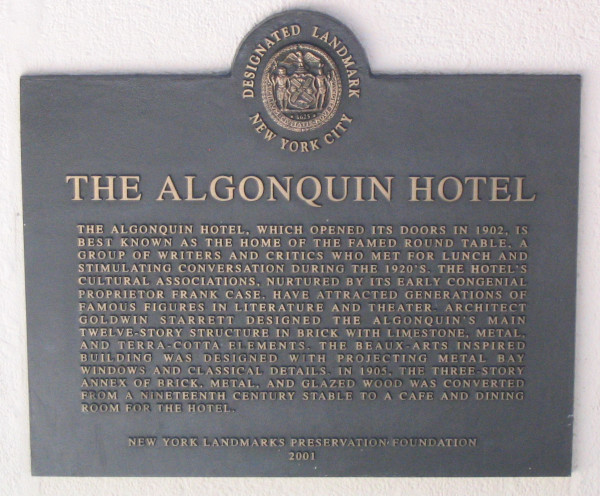
Returning to her West 71st Street apartment, Parker may have been greeted by her husband. Eddie had returned to New York the previous summer, struggling with drug use as did many GIs returning from the Great War. For commiseration, Parker telephoned her friend and confederate Benchley, who immediately caught a 7 p.m. train to Manhattan from his home in Crestwood, arrived at the Parker apartment, and offered support. The next morning, he walked into Crowninshield’s office and, in protest against Parker’s dismissal, tendered his letter of resignation.
That afternoon, Parker and Benchley went to the Algonquin to tell their stories, staying for hours of gossip and rounds of drinks. After repeated recountings, the Round Table wits, who had long heard the complaints about Nast and Crowninshield, sprang into action. Alexander Woollcott persuaded his editors at the New York Times that the paper should cover the story. His article appeared the next day — good publicity for the trio, tantamount to a free "for hire" listing. A few days later, another writer from the table, Frank Adams, publicly shamed Vanity Fair: he described the kerfuffle in his column "The Conning Tower" running in the New-York Tribune. The incident helped make the Algonquin Round Table a thing.
This informal group of colleagues, friends, adversaries and contestants had started taking shape over the previous summer, starting at a roast for theater columnist and Broadway personality Woollcott upon his return to New York from military duty. The group met at 59 West 44th Street, in the dining room of a hotel that had opened in 1902 under the name The Puritan. It was Frank Case, who managed the establishment for over two decades and then bought it in 1927, who, perhaps hoping to entice a less puritan clientele, rechristened it The Algonquin, giving it the name used for a group of indigenous tribes. One can assume that Case did not intend the irony of using a name for people who had been forcibly exiled from New York City three centuries earlier.
From 1920 on, the Algonquin became a regular meeting place for a group eventually to include a host of literary and cultural figures, including New Yorker founder Harold Ross, fiction writer Edna Ferber, sportswriter Heywood Broun, and Harpo Marx. It was Case, again, who made the decision to arrange a large round table for this garrulous group, set right in the middle of the Algonquin’s "Rose Room" where they could be on display for other customers, especially the tourists. "The Gonk,” as its regulars took to calling it, was where Parker was to encounter Will Rogers, F. Scott Fitzgerald, Zelda Sayre, Ernest Hemingway, and the artist Neysa McMein, who would become her close friend.
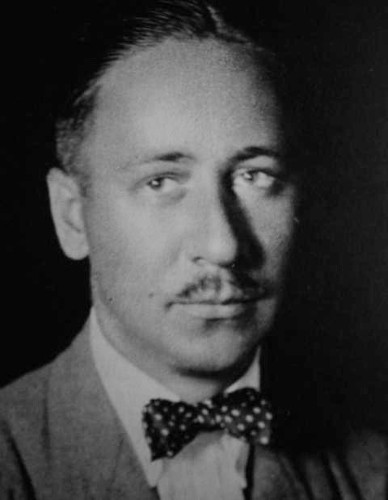
But she had other business to attend to first. On January 13 — the morning Woollcott’s article appeared — Benchley, Parker and Sherwood arrived at the Vanity Fair offices, apparently out of contractual obligation. Freed of any need for decorum, they pinned chevrons, insignias of military discharge, on themselves, and created a mock contribution box labeled "for Billie Burke." Parker kept up these embittered jokes even after January 25th, when she cleaned out her Vanity Fair desk for good. That September, she sent Benchley a series of postcards signed "Flo and Billie" and "Conde and Clarisse" (Nast’s wife, by this point estranged).
In February, she and Benchley rented an office together in the Metropolitan Opera House Studios at 39th Street and Broadway, a quick trip on the IRT or 9th Avenue elevated train from Parker’s home. The space was so tiny, she later quipped, that "an inch smaller and it would have been adultery.”
Parker’s first gig of her new life was writing intertitles for Remodeling Her Husband, a film Lillian Gish was directing, produced by D. W. Griffiths. The work dissatisfied her, and she soon resumed work as theater critic, this time for Ainslee’s, whose circulation was larger than that of Vanity Fair; it was a position allowing Parker to schedule her own work hours and write for other publications. She proceeded to have a productive winter, publishing in Ladies Home Journal and The Saturday Evening Post. Her finances survived, and that spring, she had enough to lend Benchley $200. She surely appreciated being liberated from daily editorial responsibilities, and especially being free of Nast. Indeed, she would never again work a 9-to-5 job, maintaining as much control as possible over how to pursue her profession and calling as writer.
Ziegfeld and his women stayed in her sights. In her June 1920 column for Ainslee’s, Parker wrote warmly of Ziegfeld’s Frolics — variety shows distinct from the Follies. She complimented the comedic performances of W. C. Fields, Mary Hay, and Fanny Brice, but skewered the singing of Lillian Lorraine — the longtime Ziegfeld paramour who had been instrumental to Ziegfeld’s divorce from Held. Commenting sardonically on the show’s female chorus, she wrote: "Where the Ziegfeld girls come from will always be one of the world’s great mysteries". Her next column reviewed the Follies, giving the thumbs down to even the music of Irving Berlin and Eddie Cantor.
When Parker likened Billie Burke to Eva Tanguay, she was gesturing past the actor to the patriarchal structures, personal and professional, represented by Ziegfeld and Nast. She surely knew that she was risking her position, and just as surely decided that to defer to those structures would be worse than the consequences of defying them.
Author Bio:
Jonathan Goldman (Professor, New York Institute of Technology) is author of Modernism Is the Literature of Celebrity, editor of Modernist Star Maps: Celebrity, Modernity, Culture and editor of Joyce and the Law. His work about Dorothy is from his website project "NYC 1920: 100 Years Ago Today (When We Became Modern)."
This article [When Dorothy Parker Got Fired From Vanity Fair] was originally published in the Public Domain Review under a Creative Commons Attribution-ShareAlike 3.0. If you wish to reuse it please see: https://publicdomainreview.org/legal
Highbrow Magazine
Image Sources:
Wikipedia (Creative Commons)
Kevin Fitzpatrick (Flickr, Creative Commons)
Wikimedia.org (Creative Commons)
Wikimedia.org (Creative Commons)
Wikipedia.org (Creative Commons)
































































































































































































































































































































